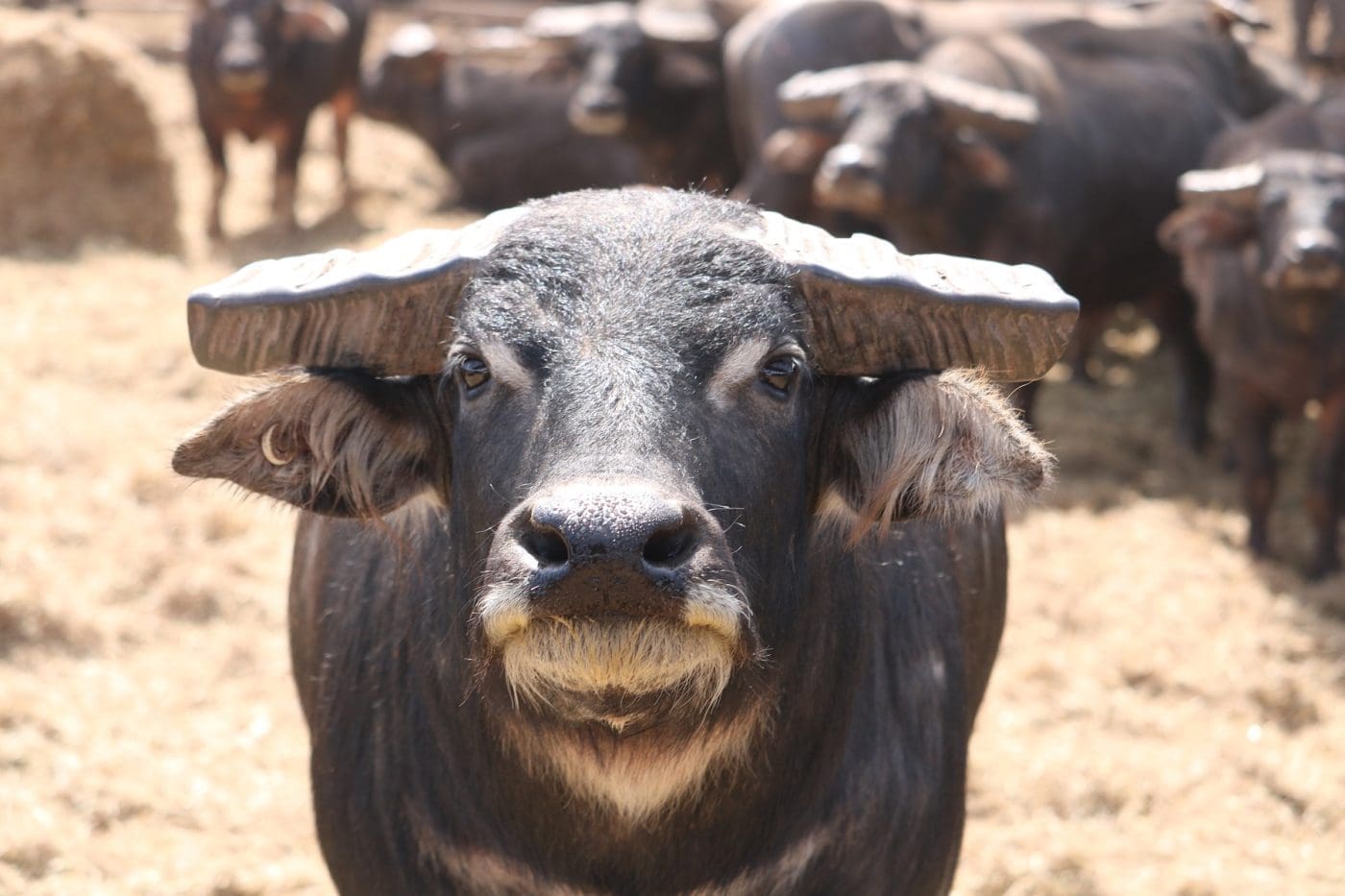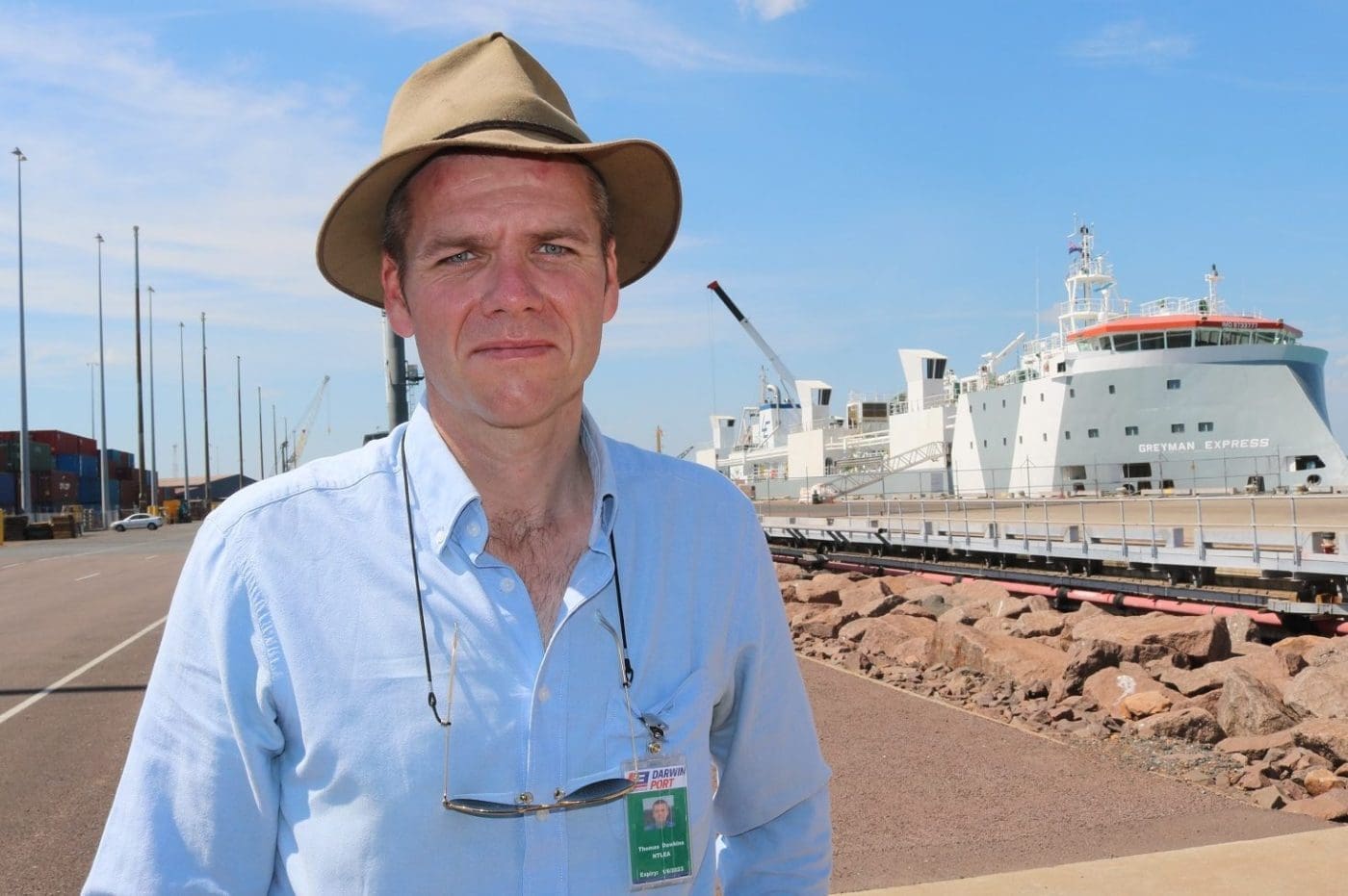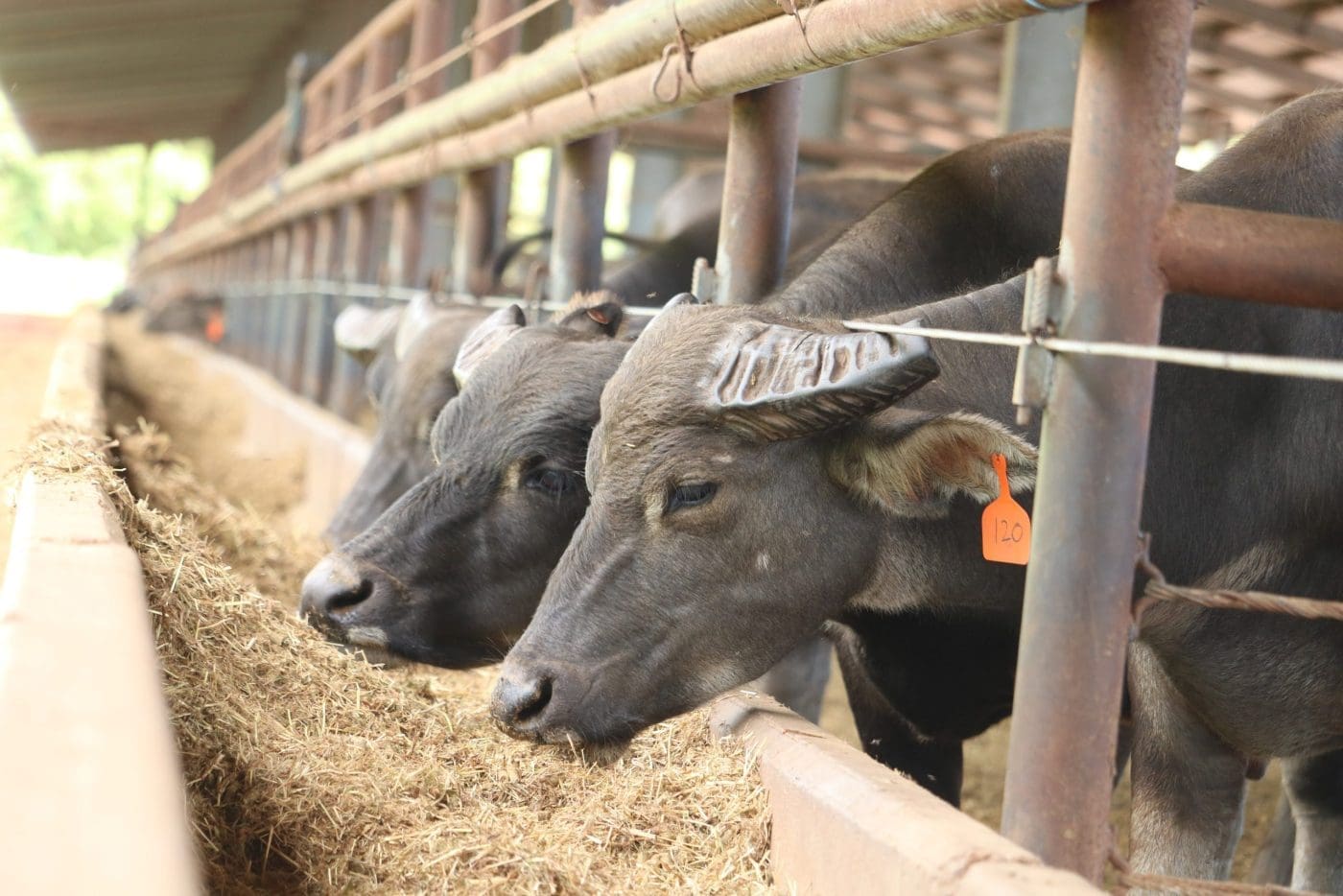
Northern Territory live export buffalo at the Noonamah yards. About 11,000 head are exported live each year. Photo: NT Buffalo Industry Association
THE Northern Territory buffalo industry has pushed back on a new study suggesting culling the wild Top End bovine has the potential earn millions-of-dollars in carbon credits.
A team of scientists from Charles Darwin University released the study in January, which ran 20-year simulations of feral water buffalo populations to estimate how much methane production would be avoided on a parcel of land in the South Alligator River region of Kakadu National Park.
The research paper, which was published this month in Wildlife Research, concluded that the potential value of the avoided methane emissions resulting from controlling water buffalo far exceeded the costs of applying aerial control operations. The researchers said it could also apply to other pest species and wild cattle on marginal land.
NT Buffalo Industry Council chief executive officer Tom Dawkins said his members – who include contract mustering businesses, indigenous ranger groups and pastoralists – felt ignored by the study. He said the researchers seemed to ignore the $30 million industry in preference for shoot-to-waste culling models.
“This study is just so narrow and makes some huge assumptions. While I appreciate that the CDU media team likes drumming up publicity, the headlines and messages the research is generating are recklessly wide of the mark,” Mr Dawkins said.
“We have real doubts about the assumptions on which the whole study seems to pin its hopes on, because the expert feedback I’m getting is that this sort of research tends to overestimate how much NT buffalo actually eat and that modelling often leans too heavily on feeding trials for cattle in settings which don’t look anything like the Top End.”
Mr Dawkins said he believed carbon credits could add some value to landscape and animal management in the tropics across different land jurisdictions, but that the market value of wild bovine for meat would continue to be the most powerful lever in sustainable herd control.
“I’m working with remote populations in the NT looking at how buffalo and cattle can be utilised for their own food security and food affordability challenges, which to me has many similarities to the food supply concerns our export customers live with across South East Asia,” he said.
“So when we’ve seen media discussion in recent days rather flippantly talking up shoot-to-waste culling across the Top End as some sort of magic solution, I think it’s stirred fear and caused quite a bit of distress.
“Let’s remember that in a world where access to affordable protein is increasingly challenging, you can’t eat a carbon credit.”
Major economic value in NT buffalo
In recent years, close to 11,000 buffalo have been exported live to South East Asia annually, while the Rum Jungle abattoir near Darwin has recorded an average throughput of 6000 buffalo per year since it re-opened in 2020.
“Annual contract mustering programs across the Top End span large parts of the Indigenous Estate including Arnhem Land, as well as pastoral properties, national parks and even military areas. Mustering improves the management and monitoring of wild bovine populations, which is more important than ever given the heightened need for animal disease surveillance,” Mr Dawkins said.
“We already have a proven economic mechanism in managing buffalo and it’s one that has far stronger credentials in every respect compared to relying on shoot-to-waste aerial culling.
“Even in a landscape like Kakadu, to bring in a helicopter and shoot the wild cattle and buffalo in residence, you’re still leaving a decaying carcass which will create emissions but also just leave more space for feral pigs and unwanted weeds to thrive.
“The ongoing culling programs in Kakadu aren’t just expensive, the shoot-to-waste regime creates a huge biosecurity blind spot in the NT and, on face value, would be a very difficult sell to ethically astute corporates and institutions looking to buy carbon credits.”
“Unacceptable risk” in carbon culling
Mr Dawkins said it was important to give Traditional Owners reliable information about the way carbon credits might become part of their economic landscape.
“Feedback from rangers about the carbon market is that mustering programs should continue to deliver a reliable economic and environmental dividend, and that putting all their eggs in any ‘carbon culling’ would present unacceptable risks on a number of fronts,” he said.
“Mustering wild buffalo and cattle in the NT is an important source of income for many traditional owners and it generates employment in the regional workforce, including for indigenous Territorians, and economic activity for contracting teams, transporters, yards, exporters and the Rum Jungle abattoir. Mustering should always be the first option when managing wild bovine populations.
“Aerial shooting should only ever be the last option and only in particular settings. More than ever, as we’re seeing with brumby control in the high country, throwing tax-payer funds at big shooting programs creates all sorts of reputational and social licence risks which we need to remain mindful of, especially in terms of the international brand of the Northern Territory and destinations like Kakadu.”
Mr Dawkins said he had contacted the CDU researchers since the study was published and was grateful for their willingness to engage and collaborate more proactively in the future.
“Handled the right way, this should have been a ‘good news’ story for CDU and our industry because the message should have been that removing wild bovine from a particular landscape, primarily through mustering programs, could create carbon credit opportunities,” he said.
“Instead we’ve had quite a clumsy narrative focussed on culling and all built on a very, very preliminary study which has really overstated its scope and application. When I think everyone wants to progress the discussion about carbon credits and not needlessly scare people off, taking several steps backwards like this really is disappointing.”
More research needed
Beef Central contacted CDU late yesterday afternoon for a response to the concerns raised by the NTBIC and hopes to hear back later today – this article will be updated accordingly.
However in the media release attached to the study, lead author Hugh Davies acknowledged the work was based on assumptions such as the carrying capacity of the landscape and said it needed to be tested and examined further.
“This is just the start of the research, but it throws up some ideas we should consider in carbon offsets,” Dr Davies said.
“This approach could incentivise the control of numerous destructive feral animals which has often been put in the too hard basket – such as feral camels in the outback, or the booming feral deer populations in Victoria, NSW and Tassie. This is an exciting prospect. It changes everything and would have massive ecological benefits.”
- To read the full study click here



the whole idea of culling instead of employment in all industries is absurd, instead of adding export dollars to our economy via live exports or supplying the buffalo, camel boxed meats to a growing domestic market also when we have international droughts with children starving is the typical culling attitude of Australian research analyst findings to solving feral animal problems, we find sending millions of $’s to these countries will solve their starving populations when its food they need not $’s so maybe if the government gives rebates to musterers, indigenous communities for supplying live animals to the live exporters or abattoirs would tick a lot more positive boxes opposed to leaving rotting carcasses
Well done Tom and BIC members. I love the comment “You can’t eat a carbon credit” How true. We all have been conditioned to ‘follow the science’ and trust the universities, but it seems that their assumptions are lacking cement here.
I expect next pest controllers who kill termites will be able to collect carbon credits as they have stopped lots of termite methane emissions.
When will someone call out the stupidity that is the carbon credit industry?